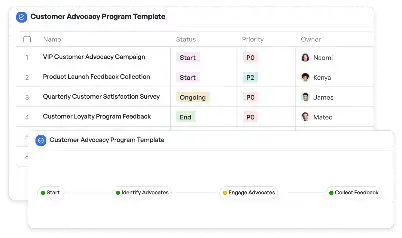Cross-Docking Efficiency Optimization Model
Achieve project success with the Cross-Docking Efficiency Optimization Model today!

What is Cross-Docking Efficiency Optimization Model?
The Cross-Docking Efficiency Optimization Model is a strategic framework designed to streamline the process of transferring goods directly from inbound to outbound transportation with minimal storage time. This model is particularly crucial in industries like retail, e-commerce, and logistics, where time-sensitive delivery and cost efficiency are paramount. By leveraging advanced algorithms and real-time data, the model ensures optimal scheduling, resource allocation, and load balancing, reducing bottlenecks and enhancing operational efficiency. For instance, in a high-volume distribution center, the model can dynamically adjust docking schedules to accommodate fluctuating demand, ensuring seamless operations.
Try this template now
Who is this Cross-Docking Efficiency Optimization Model Template for?
This template is tailored for logistics managers, supply chain analysts, and warehouse operators who are responsible for optimizing cross-docking operations. Typical roles include transportation coordinators managing inbound and outbound shipments, warehouse supervisors overseeing docking activities, and supply chain strategists aiming to enhance overall efficiency. Additionally, businesses in sectors like retail, manufacturing, and e-commerce can benefit from this model to meet tight delivery schedules and reduce operational costs.

Try this template now
Why use this Cross-Docking Efficiency Optimization Model?
Cross-docking operations often face challenges such as misaligned schedules, inefficient resource utilization, and delays in load transfers. The Cross-Docking Efficiency Optimization Model addresses these pain points by providing a structured approach to synchronize docking schedules, allocate resources effectively, and balance loads across multiple docks. For example, it can prevent delays caused by overlapping schedules by dynamically adjusting docking times based on real-time data. Furthermore, the model enhances resource utilization by assigning tasks to available personnel and equipment, ensuring smooth operations even during peak hours. This targeted approach not only minimizes delays but also reduces operational costs, making it an invaluable tool for businesses aiming to stay competitive in fast-paced industries.

Try this template now
Get Started with the Cross-Docking Efficiency Optimization Model
Follow these simple steps to get started with Meegle templates:
1. Click 'Get this Free Template Now' to sign up for Meegle.
2. After signing up, you will be redirected to the Cross-Docking Efficiency Optimization Model. Click 'Use this Template' to create a version of this template in your workspace.
3. Customize the workflow and fields of the template to suit your specific needs.
4. Start using the template and experience the full potential of Meegle!
Try this template now
Free forever for teams up to 20!
The world’s #1 visualized project management tool
Powered by the next gen visual workflow engine




